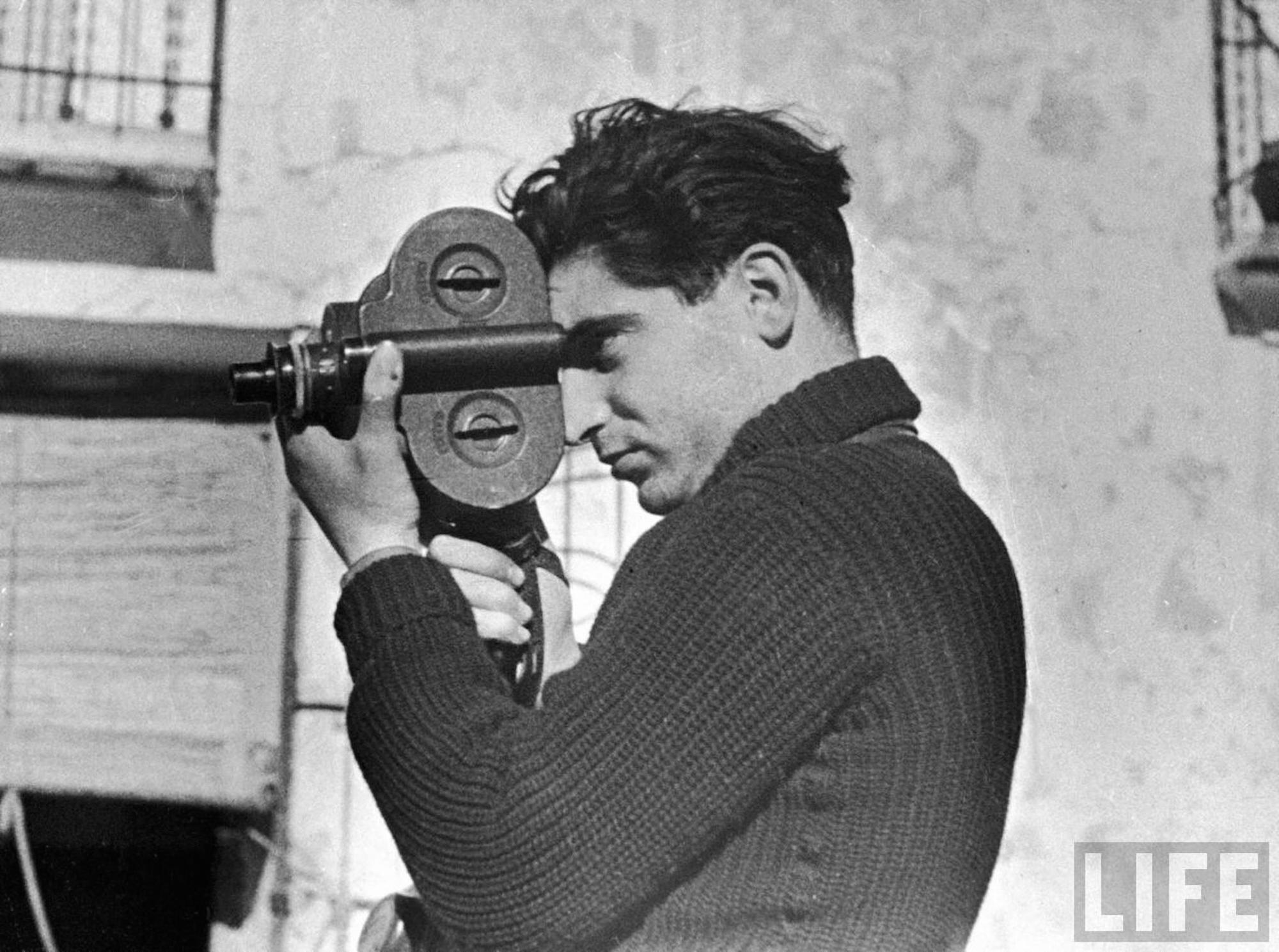More about Robert Capa
- All
- Info
- Shop
Works by Robert Capa

Contributor
Robert Capa is probably the best and boldest war photographer of all time.
Capa, whose real name is Endre Erno Friedmann, was born in Budapest, Hungary in 1913 with a full head of hair and an extra finger. His mother took this as a sign that someday her son was going to be famous. Though the means by which Capa’s mother came to this conclusion were not founded in any sort of science, she was not wrong. Her son would go on to become perhaps the bravest war photographer in history – one whose motto was, “If your pictures aren’t good enough, you’re not close enough.” This sentiment drove Capa’s work from beginning to end.
Before he became Robert Capa, Endre was a refugee fleeing a Fascist Hungary at the age of 16. He went to Berlin first, and then Paris, where he met a friend, colleague, and lover in Gerda Taro, who at the time still went by Gerta Pohorylle. The two came up with the pseudonym, “Robert Capa” and characterized him as a famous American photographer, so the two of them could get their photographs into prestigious publications. Astonishingly, it worked. And even after the jig was up, the two of them were sent to Spain to cover the Spanish Civil War. This is where the collaboration between Gerda Taro and Robert Capa ended, however. Taro was struck by a tank and died from her injuries. Capa, who by this time took on the “Robert Capa” persona full time, never completely recovered from the loss. But he continued shooting and soon captured one of the most famous photographs of war ever, The Falling Soldier - a photo of a man who had just been struck by a bullet and was falling to the ground. This was just the beginning of the intense moments that Capa would capture in his life.
Capa was also present when the first wave of soldiers landed on Omaha beach in Normandy on D-Day, June 6, 1944. As author Haley Weiss describes, “His photographs, including an iconic image of a soldier crawling through the surf, became enduring records of the plight of the American soldiers.” These images were paramount to the war effort, even though only 11 of them survived the development process. Capa actually took 106 photos that day, but in the rush to deliver them to the public, a development assistant made a horrible mistake and all but eleven of the negatives were melted. But these 11 pictures, called The Magnificent Eleven, were astounding. They became the inspiration for the opening scene of Steven Spielberg’s Saving Private Ryan. Spielberg himself said, “I did everything I could to get June 6, 1944, to look like Bob Capa’s photographs.”
Capa miraculously made it out of Omaha beach alive and went on to photograph the Indochina War in Vietnam. While on assignment for Life in 1954, Capa stepped on a land mine, killing him instantly. This was a tragic loss, but no one could ever say that Capa’s didn’t live his life to the fullest. He was purported to be the life of the party. He was friends with Ernest Hemingway, Picasso, and John Steinbeck. He was awarded the presidential Medal of Freedom, and his little brother, Cornell Capa, created the International Center of Photography in his honor. Not bad, Capa. Not bad.
Sources
- Brenner, Marie. "War Photographer Robert Capa And His Coverage Of D-Day." Vanity Fair. N.p., 2014. Web. 18 Sept. 2018. https://www.vanityfair.com/culture/2014/06/photographer-robert-capa-d-d…
- Morris, John G. "D-Day / 60 YEARS LATER: 'This Is It:' How Robert Capa Got The Pictures." Nytimes.com. N.p., 2004. Web. 18 Sept. 2018. https://www.nytimes.com/2004/06/05/news/dday-60-years-later-this-is-it-…
- O'Hagan, Sean. "Robert Capa And Gerda Taro: Love In A Time Of War." the Guardian. N.p., 2012. Web. 18 Sept. 2018. https://www.theguardian.com/artanddesign/2012/may/13/robert-capa-gerda-…
- "Robert Capa | International Photography Hall Of Fame." International Photography Hall of Fame. N.p., 2018. Web. 18 Sept. 2018. http://iphf.org/inductees/robert-capa/
- Weiss, Haley. "Photographer Robert Capa Risked It All To Capture D-Day—Then Nearly All His Images Were Lost." Artsy. N.p., 2018. Web. 18 Sept. 2018. https://www.artsy.net/article/artsy-editorial-photographer-robert-capa-…
Featured Content
Here is what Wikipedia says about Robert Capa
Robert Capa (/ˈkɑːpə/; born Endre Ernő Friedmann,
Hungarian: [ˈɛndrɛ ˈɛrnøː ˈfridmɒn]; October 22, 1913 – May 25, 1954) was a Hungarian-American war photographer and photojournalist. He is considered by some to be the greatest combat and adventure photographer in history.
Friedman had fled political repression in Hungary when he was a teenager, moving to Berlin, where he enrolled in college. He witnessed Adolf Hitler's rise to power, which led him to move to Paris, where he met and began to work with his professional partner Gerda Taro, and they began to publish their work separately. Capa's close friendship with David Seymour-Chim was captured in Martha Gellhorn's novella Two by Two. He subsequently covered five wars: the Spanish Civil War, the Second Sino-Japanese War, World War II across Europe, the 1948 Arab–Israeli War, and the First Indochina War, with his photos published in major magazines and newspapers.
During his career he risked his life numerous times, most dramatically as the only civilian photographer landing on Omaha Beach on D-Day. He documented the course of World War II in London, North Africa, Italy, and the liberation of Paris. His friends and colleagues included Ernest Hemingway, Irwin Shaw, John Steinbeck and director John Huston.
In 1947, for his work recording World War II in pictures, U.S. general Dwight D. Eisenhower awarded Capa the Medal of Freedom. That same year, Capa co-founded Magnum Photos in Paris. The organization was the first cooperative agency for worldwide freelance photographers. Hungary has issued a stamp and a gold coin in his honor.
He was killed when he stepped on a landmine in Vietnam.
Check out the full Wikipedia article about Robert Capa












